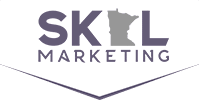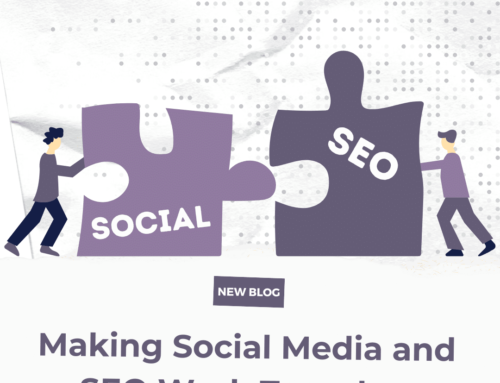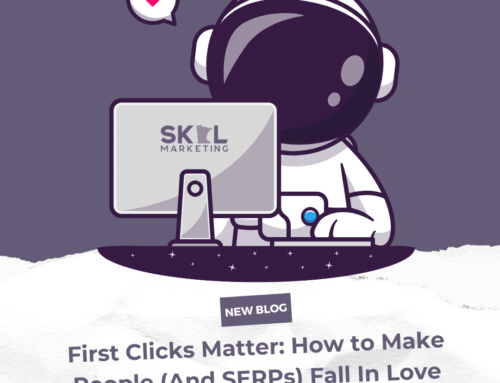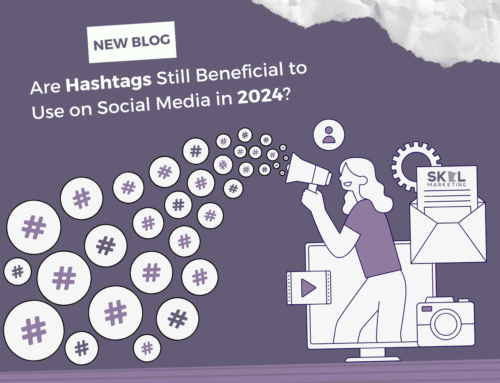The biggest challenge in marketing has never been identifying an audience or crafting great ads; since the inception of the industry, the hardest part of marketing has almost always been tracking performance. How do you know if an ad works? Even if you see more customers, how do you filter out all the variables that could be potential causes? It’s never been easy.
Fortunately, social media (and digital marketing in general) allows us access to consumer data tracking the likes we’ve never seen before, making it easier than ever to determine if your marketing efforts (and dollars) are seeing a huge return or going completely to waste. But sometimes that information can feel like a firehose (in fact, Twitter even refers to it’s own full data stream as “the firehose”), overwhelming you with data that can be extremely useful, but only if you know what you’re looking for.
So how do you sort out the useful data to track your performance from all the noise? Here are 5 metrics that help track your social media performance.
Social Media Reach
Social media reach is one of those metrics that’s incredibly simple to define, but incredibly complex once you scratch beneath the surface. Reach is just a matter of how many users on a platform are shown a particular piece of content, which sounds easy enough. Back in the early days of social media, your content reach would basically be 1:1 with your followers–if they followed you to see your posts, then the platform would show them your posts.
But not so much anymore. Nowadays, social media algorithms are incredibly advanced–and social media users and posts so abundant–that it can’t remain that simple. In 2022, post reach can be based on how engaged a particular user is with your content (if they like or leave comments on a lot of your posts, they’re more likely to see more of those posts), time of day, and the content of your post (do you have high-quality images or videos, or just text?).
importantly, tracking reach is important because higher reach correlates strongly with higher reach. Does that sound strange? Think of it this way: When your content reaches more people, more people are likely to engage with it (more on that below), and when more people engage with it, that content is shown to even more users. It’s a snowball effect, so tracking content reach can be a great way to anticipate which content will continue to do well going forward.
Post Engagement
Content engagement is probably the metric that most small business operators think of when they start trying to track their social media performance. Engagement is a catch-all term for any way that a social media user interacts with a piece of content–this means likes, reactions, comments, and shares are all forms of engagement, each with its own algorithmic weight.
Tracking engagement is important because, as explained above, higher engagement usually results in higher reach, which in turn often creates higher engagement; the two feed off each other to create the “viral” content social media users so frequently strive for (as an aside, this is also why it’s so much more cost-effective to put social media ad dollars behind posts that are already doing well organically, rather than using that money to try to “uplift” low-performing content).
Reach and engagement are, for the reasons just described, probably the two most common social media performance metrics people pay attention to. And for good reason, as they’re incredibly important! But the savviest social media marketers know that these are far from the only metrics worth following and that spending all your time tracking just reach and engagement is leaving plenty of useful data on the table.
Follower Growth
If your goal is building your brand’s online presence, then follower growth is a natural metric to track during your campaigns. Follower growth is exactly what it sounds like: you track how many new follows/page likes/etc your social media profile gets in a particular time period, giving you a sense of how quickly your page’s popularity is growing (if it’s growing at all).
Follower growth is a great “macro” metric to track because it can be used in conjunction with other metrics (such as reach and engagement) to give you a clear sense of what works and doesn’t work within your social campaigns. Do you see a consistent bump in followers after you share a particular type of content? Do you see your growth rate accelerate when you started posting every day instead of every other day? Have you been getting more followers since you started displaying your social media handles in your store? These are the sorts of questions that can help you really refine your marketing strategy and hone in on the most effective use of your time and money.
Of course, more followers also means more data for you to track, and more users willing to potentially purchase from your business in the future. One word of warning, though: some business owners fall into the trap of only tracking follower growth, and if you aren’t using it to really sharpen your marketing efforts and increase your sales, then you risk letting it become a metric that does nothing but serve as an ego boost.
Conversion Rates
Conversion rates are a classic marketing metric that has taken on even greater importance and life in the age of digital advertising. For every person that sees an advertisement, how many actually take the next step into the sales funnel? Whether they reach out for more information on a product, make further online searches, or actually make a purchase, knowing the likelihood that any given ad recipient will “convert” into an active lead is fundamental in tracking how effective your advertisements (or social media content) is.
With the advent of social media data tracking, conversion rate tracking is arguably easier and more accurate than at any other point in history. If you run digital ads on Facebook, for example, you’ll be able to see exact data on the conversion rates for whatever the advertisement goal is–it could be to get users to buy a product, or to sign up for a mailing list, or to simply “like” your page.
In the past, you may have run an ad campaign and had to wait months to see if more business came in–and even then, it was often like consulting a crystal ball to see if it really worked. Now, you can check in on a digital ad campaign daily and make changes on the fly if you see an ad not getting the returns you’re hoping for. Whatever your goal, paying close attention to conversion rates is one of the most powerful ways to make sure your advertising dollars are being put to good use, and to adapt your strategy accordingly.
Return on Digital Ad Investment
All of this adds up to perhaps the ultimate paid social advertising metric; return on digital ad investment. While a conversion rate can tell you how many people are taking a particular action after seeing a given ad, it can’t tell you how much money you’re actually bringing in. You may be able to see that a person made a purchase, but a conversion rate alone won’t tell you if that purchase was for $1 or $100, or $1,000.
Return on digital ad investment (or digital ad spend) is a fantastic metric that utilizes new digital tools like Facebook Pixel to track a user’s entire journey, from the moment they’re first served an advertisement to the moment they click “purchase” and even beyond. By tracking how much money is made from a particular user relative to the amount spent serving them ads that lead to the purchase, you can see exactly how efficiently your marketing money is being spent, and budget accordingly.
With social media comes a web of metrics that all build on each other to give you a strong sense of how effective your social media campaigns are. But navigating this web of interconnected data can be potentially overwhelming and time-consuming, so Skol Marketing’s team is here to help. For one-on-one guidance or to discuss how we can help your company make the most of its social media marketing budget in 2022, please don’t hesitate to contact the local social media marketing experts at Skol Marketing.





